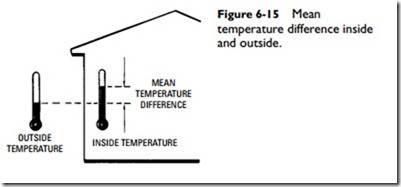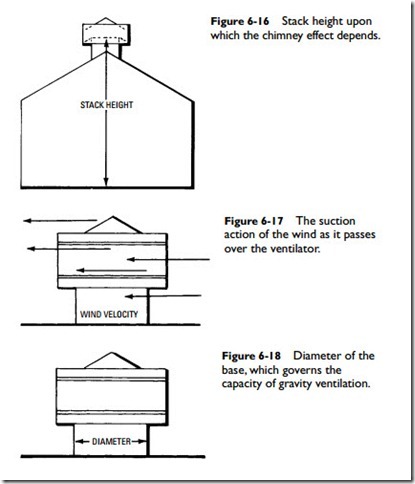Motive Force to Cause Air Circulation
Two agencies form the motive force to cause air circulation:
(1) temperature differences inside and outside the building resulting in a chimney effect, and (2) inductive action caused by wind blowing against the ventilator.
Capacity of Ventilators
The following factors must be taken into consideration in making a selection of the proper ventilator for any specific problem:
1. Mean temperature difference.
2. Stack height (chimney effect).
3. Inductive action of the wind.
4. Area of opening in the ventilator.
The mean temperature difference refers to the average temperature difference between the air inside and outside the building (see Figure 6-15). If the ventilating problem is essentially a winter one, this difference may be as much as 40˚F, while in summer, when doors and windows are open, this difference will probably drop to about 10˚F.
Stack height (see Figure 6-16) is the height of the column of warm air that causes the chimney action of the ventilator. It is measured in feet from the floor of the building to the top of the ventilator barrel.
The inductive action of the wind (see Figure 6-17) is the effect of the wind as it passes over the ventilator in inducing a circulation out of the building.
The area of the opening in the ventilator (see Figure 6-18) is determined by the rated size of the ventilator, expressed as the inside diameter of the barrel in inches.

